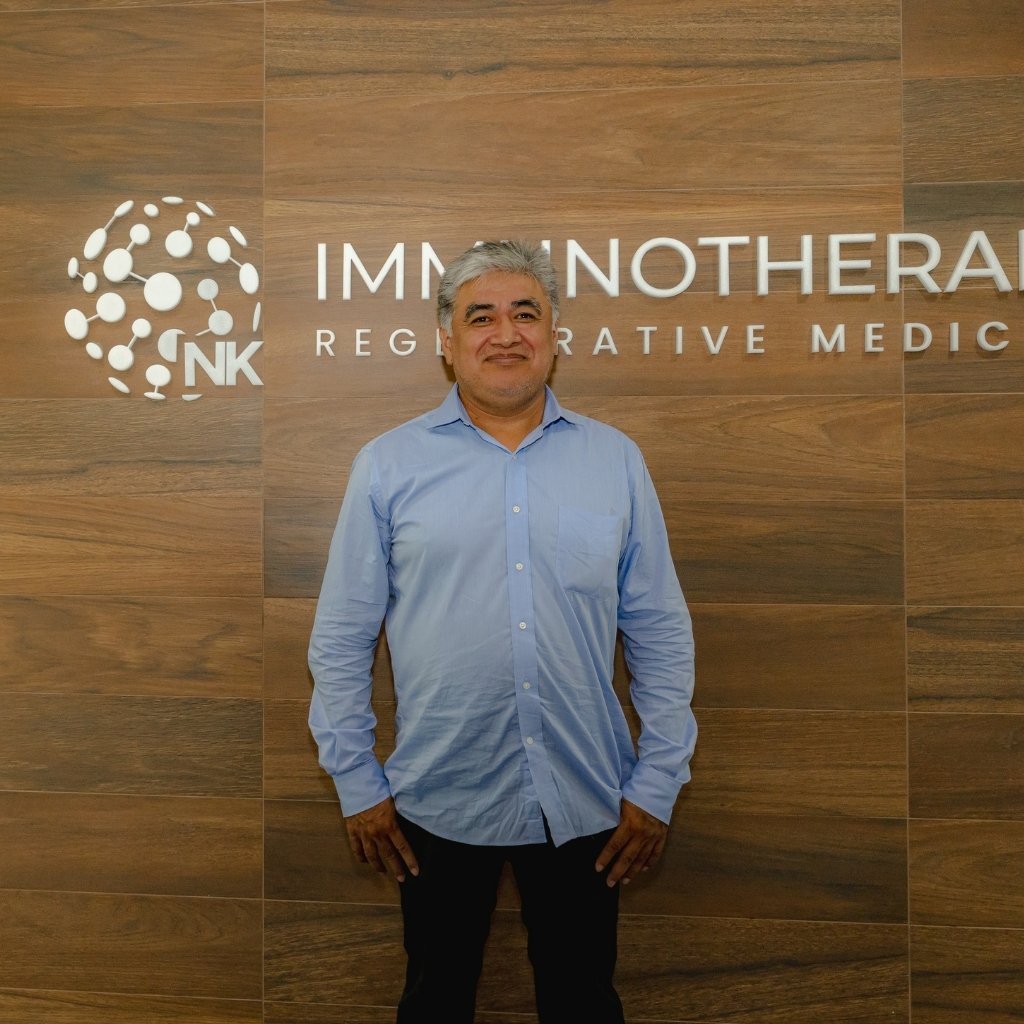Alberto Parra Barrera, Ph.D., is a biomedical scientist whose work bridges regenerative medicine, tissue engineering, and hematology/oncology. His research focuses on translating laboratory discoveries—particularly those involving mesenchymal stem cells (MSCs) and bioactive compounds—into practical clinical strategies to restore tissue function and improve patient outcomes. Dr. Parra Barrera’s collaborative projects and publications span basic mechanisms of cell differentiation through to first-in-patient regenerative approaches, with appointments and co-authorships at the Escuela Superior de Medicina (ESM), Instituto Politécnico Nacional in Mexico City and collaborative clinical research with Immunotherapy Regenerative Medicine in Puerto Vallarta.
Areas of expertise
Dr. Parra Barrera’s expertise centers on:
- Regenerative medicine & stem cell biology: Isolation, characterization, and clinical deployment of autologous mesenchymal stem cells (MSC) for tissue repair. His work includes standardized MSC phenotyping (e.g., CD73, CD90, CD105 positivity; CD45/14 negativity), osteogenic/adipogenic differentiation, and cell-based delivery strategies that align with International Society for Cell & Gene Therapy (ISCT) criteria.
- Tissue engineering & biomaterials: Preclinical and in-vitro studies integrating biopolymers and bioactive small molecules to enhance osteogenic differentiation and bone regeneration, including research on (-)-epicatechin as an adjunct to osteogenic media in human MSCs.
- Hematology/oncology mechanisms: Co-authored reviews on the infectious etiology hypotheses in childhood leukemia, contributing to the understanding of environmental and infectious factors in leukemogenesis.
Academic & institutional affiliations
Dr. Parra Barrera is affiliated with the Regenerative Medicine & Cancer Laboratory within the Escuela Superior de Medicina, Instituto Politécnico Nacional (IPN), where his publications list him on graduate research programs and collaborative translational projects. He also collaborates clinically with Immunotherapy Regenerative Medicine (Puerto Vallarta)—a link reflected in co-authored translational work connecting laboratory findings to patient-facing applications.
Translational focus
A hallmark of Dr. Parra Barrera’s work is the translation of MSC science to the bedside. In a published clinical case, his team prepared and applied autologous bone-marrow MSCs—meeting identity and viability criteria—and combined them with a cutaneous autograft to treat a chronic lower-limb ulcer secondary to type-2 diabetes mellitus. The intervention led to graft integration and full wound coverage, highlighting feasibility and potential cost-effectiveness for health systems managing complex diabetic complications.
Complementing the clinical evidence, his in-vitro studies with collaborators show that low concentrations of (-)-epicatechin can up-regulate osteogenic markers (BMP2, RUNX2, SPARC) and increase calcium deposition in human MSCs—an effect consistent with enhanced osteogenic differentiation. This line of work supports the development of adjunctive, nutraceutical-informed strategies to augment bone regeneration.
In oncology, Dr. Parra Barrera has contributed to a peer-reviewed synthesis of evidence regarding infectious agents and childhood leukemia, clarifying plausibility, mechanistic pathways, and epidemiological patterns of infection-linked leukemogenesis. These insights inform future prevention and early-life exposure studies in pediatric cancer.
Representative publications (with links)
- Autologous MSCs + skin autograft for chronic diabetic ulcer (clinical case).
Cirugía y Cirujanos (English Edition), 2015;83(6):532-536. Demonstrates feasibility and clinical integration of autologous MSCs processed under standardized criteria, resulting in complete lesion coverage and functional recovery in a complex case of T2D-associated chronic ulcer. (See journal page and PDF.) - (-)-Epicatechin promotes osteogenic gene expression in human MSCs (in-vitro).
Journal of Medicinal Food, 2025;28(8):757-767. Low-dose epicatechin synergizes with sub-pharmacologic osteogenic medium to increase BMP2, RUNX2, and SPARC expression and mineral deposition; affiliations include ESM-IPN and Immunotherapy Regenerative Medicine. (See PubMed record and publisher.) - Review: Infectious Agents in Childhood Leukemia.
Archives of Medical Research, 2017;48(4):305-313. A comprehensive review co-authored by Dr. Parra Barrera (ESM-IPN) synthesizing mechanistic and epidemiologic data on infection-linked leukemogenesis and its implications for pediatric ALL.
Additional indexing/affiliation resources: IPN Elsevier Pure researcher portal entry for Alberto Parra Barrera (links out to Scopus/outputs).
Current lines of work
- MSC-based wound repair & tissue regeneration. Ongoing protocol development and optimization of MSC isolation/expansion (autologous bone marrow), phenotype confirmation, and application strategies for hard-to-heal wounds and musculoskeletal repair—always aligned to identity/viability standards and sterile processing.
- Bioactive molecules & osteogenic signaling. Exploration of flavonoid-driven osteogenesis to reduce pharmacologic burden in bone regeneration, with a focus on BMP2/RUNX2/SPARC pathways in human MSCs and potential adjuvant roles for nutraceuticals in skeletal healing.
- Etiologic factors in leukemia. Continued scholarly work integrating clinical epidemiology and molecular insights to clarify how infectious exposures may intersect with immune development and leukemogenic events in childhood.
Impact
Across bench, bedside, and review literature, Dr. Parra Barrera’s contributions advance three strategic aims for Immunotherapy Regenerative Medicine – NK Division and partners:
- Establishing safe, standardized MSC workflows for clinical use—covering identity (flow cytometry markers), potency (differentiation), and sterility—to underpin real-world wound care and reconstructive protocols.
- Leveraging bioactive small molecules to amplify osteogenesis of MSCs, potentially shortening rehabilitation windows and improving the durability of orthopedic and dental-maxillofacial reconstructions.
- Integrating oncology insights into clinical decision-making by mapping plausible infection-related pathways in leukemogenesis, informing prevention strategies and patient education in pediatric risk contexts.
